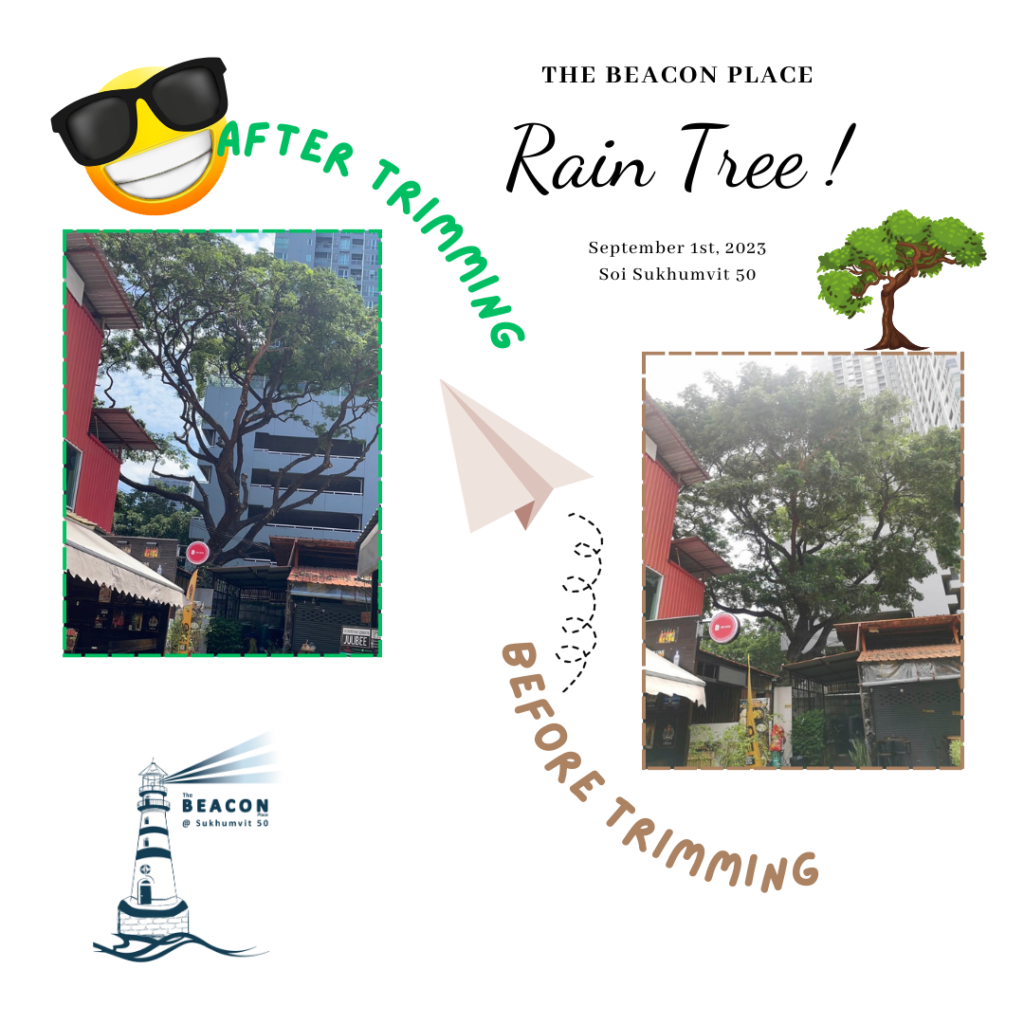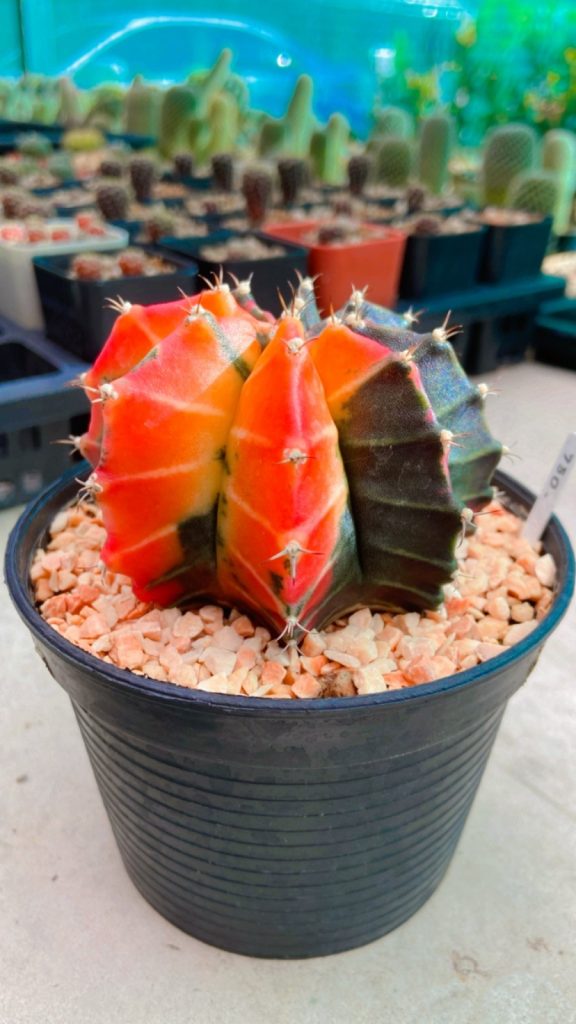
HNY 2026




ขอให้ปีนี้เป็นปีที่เต็มไปด้วยความสุข ความเจริญ และความสำเร็จนะครับ🥰
ขอให้ทุกคนร่ำรวยเงินทอง สุขภาพแข็งแรง และสมหวังในทุกสิ่งที่ปรารถนาตลอดปีงู 2025 ครับ🙏
We’ve just completed our triennial trimming of the rain tree on campus. Still looks dashing 🙂

The Importance of Triennial Trimming for Rain Trees
The majestic rain tree, known for its expansive canopy and ornamental charm, requires regular care to ensure its health and vitality. One of the crucial practices in maintaining its splendor is triennial trimming, that is, pruning every three years. Here’s why this practice is essential:
Thus, our triennial trimming of our rain tree was not just about maintaining its external beauty. It’s a comprehensive practice that ensures the tree’s health, safety of the surroundings, and the ecological balance it supports. So that beneath the rain tree’s sprawling shade, nature will continue to share stories of endurance, refuge, and ageless grace for many years to come.
The rain tree, scientifically known as Samanea saman or Albizia saman, is a large, fast-growing tree native to Central and South America. Over time, due to its ornamental appeal and other valuable attributes, it has been introduced to many tropical regions around the world. Here are some characteristics and interesting facts about the rain tree:
- Appearance: The rain tree is recognized for its wide-spreading canopy, which provides abundant shade. Mature trees can reach heights of 15-25 meters (50-82 feet) or even more.
- Leaflet Movement: One of the distinctive features of the rain tree is the way its delicate, feathery leaflets fold together in the evening or during rain, giving it names such as “five o’clock tree” or “rain tree.”
- Flowers and Fruits: The tree produces beautiful, fluffy pinkish-white flowers, which in turn give way to long, bean-like seed pods.
- Cultural Significance: In various cultures, the rain tree is considered significant, either for its shade, wood, or folklore associated with it.
- Ecological Benefits: Rain trees are known to improve soil quality in degraded lands. The tree forms a symbiotic relationship with bacteria in its roots, which helps in fixing nitrogen and enriching the soil.

A Toast to Dairy Goodness
Every year, on the first of June, people around the world come together to celebrate Milk Day—a special occasion dedicated to recognizing and appreciating the importance of milk and its numerous contributions to our daily lives. Milk is not just a nutritious beverage; it’s a symbol of nourishment, growth, and the rich heritage of dairy farming. Join us as we delve into the significance of Milk Day and explore the reasons why this beloved drink deserves its own day of recognition.
1. A Nutritional Powerhouse:
Milk is widely regarded as a nutritional powerhouse, and for good reason. It is a rich source of essential nutrients like calcium, protein, vitamins D and B12, potassium, and phosphorus. These nutrients are vital for the development and maintenance of strong bones, teeth, and overall good health. Milk also contains high-quality proteins, making it an excellent choice for muscle growth and repair.
2. Supporting Dairy Farmers:
Milk Day is an opportunity to appreciate the hard work and dedication of dairy farmers worldwide. These individuals play a vital role in bringing us the milk we enjoy. Their commitment to animal welfare, sustainable farming practices, and producing high-quality milk should not go unnoticed. Celebrating Milk Day allows us to express our gratitude and support for these farmers and their contributions to our communities.
3. Cultural Significance:
Milk holds significant cultural value in many societies around the world. It is often associated with purity, abundance, and prosperity. From traditional milk-based beverages like Indian lassi or Turkish ayran to creamy desserts and cheeses enjoyed globally, milk has found its way into diverse culinary traditions. On Milk Day, we can honor these cultural connections and appreciate the richness milk brings to our global food heritage.
4. Versatile and Delicious:
Beyond its nutritional benefits, milk is an incredibly versatile ingredient that finds its place in a wide range of recipes and culinary creations. From creamy milkshakes and frothy cappuccinos to silky sauces and baked goods, milk adds a delightful texture and flavor to countless dishes. On Milk Day, let your taste buds embark on a journey, experimenting with new milk-based recipes or indulging in your favorite milk-infused treats.
5. Promoting Health and Wellness:
Milk Day serves as a reminder to prioritize our health and wellness. By celebrating milk, we encourage the consumption of this nutrient-rich beverage as part of a balanced diet. The vitamins and minerals found in milk contribute to the overall well-being of individuals of all ages. Additionally, milk alternatives like soy milk, almond milk, and oat milk have gained popularity, catering to various dietary preferences and ensuring everyone can enjoy the benefits of milk.
Milk Day is a time to appreciate the invaluable contributions of milk and dairy products to our lives. From its nutritional profile to its cultural significance and culinary versatility, milk remains an integral part of our daily routines. On this special day, let us raise a glass and celebrate the goodness of milk while acknowledging the hard work of dairy farmers and embracing the numerous benefits that milk brings to our health and happiness. Cheers to Milk Day!

Sale of alcohol is prohibited from 6pm on Saturday 13th to 6pm on Sunday 14th due to the general election.
ตามที่คณะกรรมการการเลือกตั้ง (กกต.) กำหนดให้วันอาทิตย์ที่ 14 พฤษภาคม เป็นวันเลือกตั้ง ส.ส. นั้น ได้มีข้อห้ามเรื่องการขาย จําหน่าย จ่ายแจก หรือ จัดเลี้ยงสุราทุกชนิด ระหว่าง เวลา 18.00 น. ของวันก่อนวันเสาร์ที่ 13 พฤษภาคม จนถึงเวลา 18.00 น. ของวันอาทิตย์ที่ 14 พฤษภาคม
#thaielection2023 #เลือกตั้ง66
💦💦💦 Happy Songkran’s day 💦💦💦
สวัสดีปีใหม่ไทย 2566 ค่ะ😘
ขอให้ทุกท่านมีความสุข และสุขภาพแข็งแรง 🎉🎉🎉
#HappyThaiNewYear


Wishing everyone a very happy and healthy New Year 2023.
Thank you and look forward to your continual support.

ASPIRE Onnut Station is a new high-rise condominium with 37 floors situation on Sukhumvit Road within walking distance from BTS Onnut Station and convenience access from expressway. Their sale room is located in front of The Beacon Place.
ขอแนะนำโครงการใหม่ ASPIRE อ่อนนุช สเตชั่น เป็นคอนโดสูง 37 ชั้น ตั้งอยู่บนถนนสุขุมวิท ห่างจาก BTS อ่อนนุช เพียง 200 เมตร และใกล้ร้านค้า ใกล้จุดขึ้นลงทางด่วน เดินทางสะดวก สามารถแวะชมได้แล้ววันนี้ โดยสำนักงานขายตั้งอยู่ด้านหน้าโครงการเดอะบีคอนเพลส
Growing for tomorrow
Gymno Cactus in bloom 💕
#cactus #gymnocalycium #mihanovichii







From a little shop @ The Beacon Place

เราใช้คุกกี้เพื่อพัฒนาประสิทธิภาพ และประสบการณ์ที่ดีในการใช้เว็บไซต์ของคุณ คุณสามารถศึกษารายละเอียดได้ที่ นโยบายความเป็นส่วนตัว และสามารถจัดการความเป็นส่วนตัวเองได้ของคุณได้เองโดยคลิกที่ ตั้งค่า